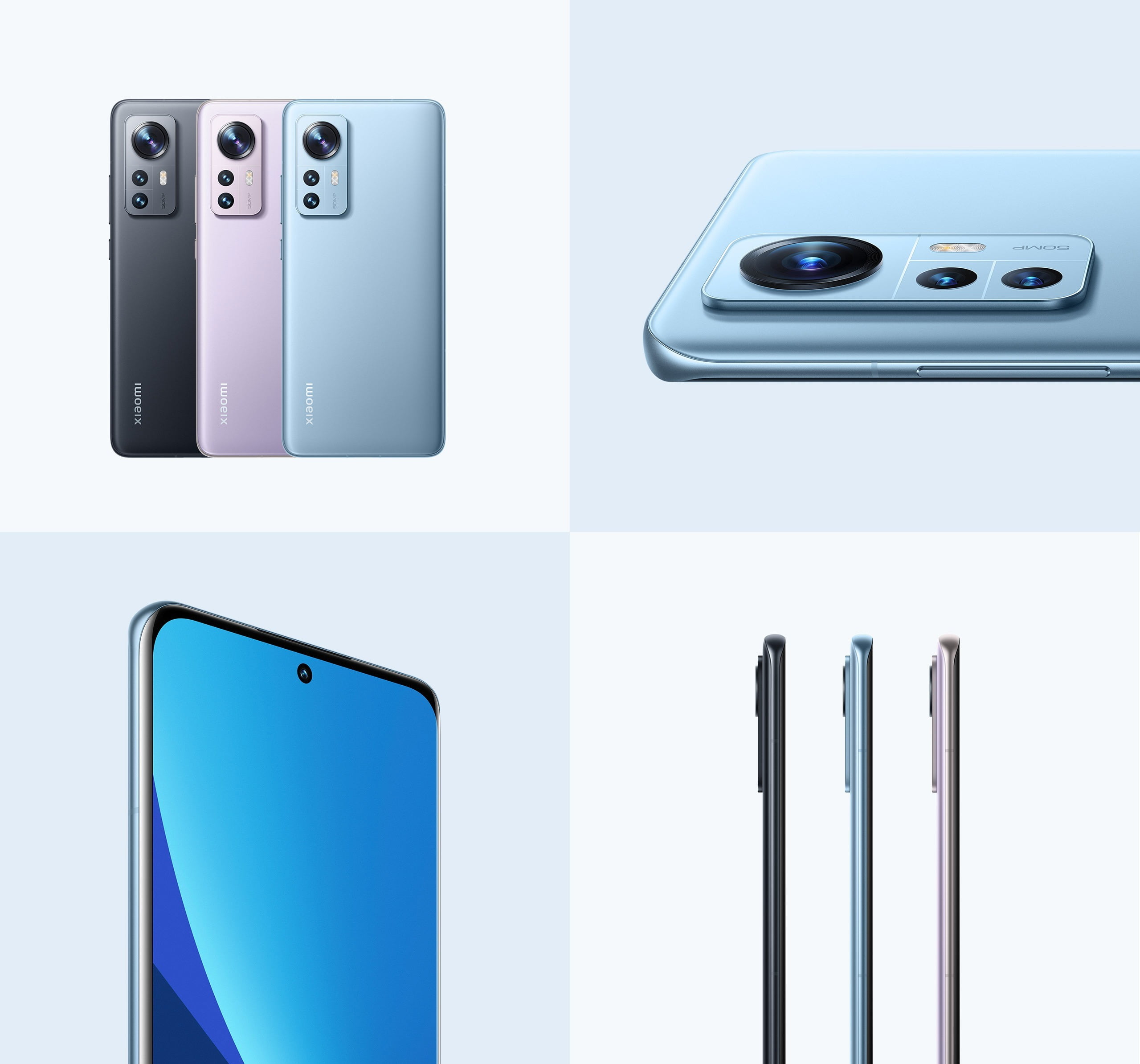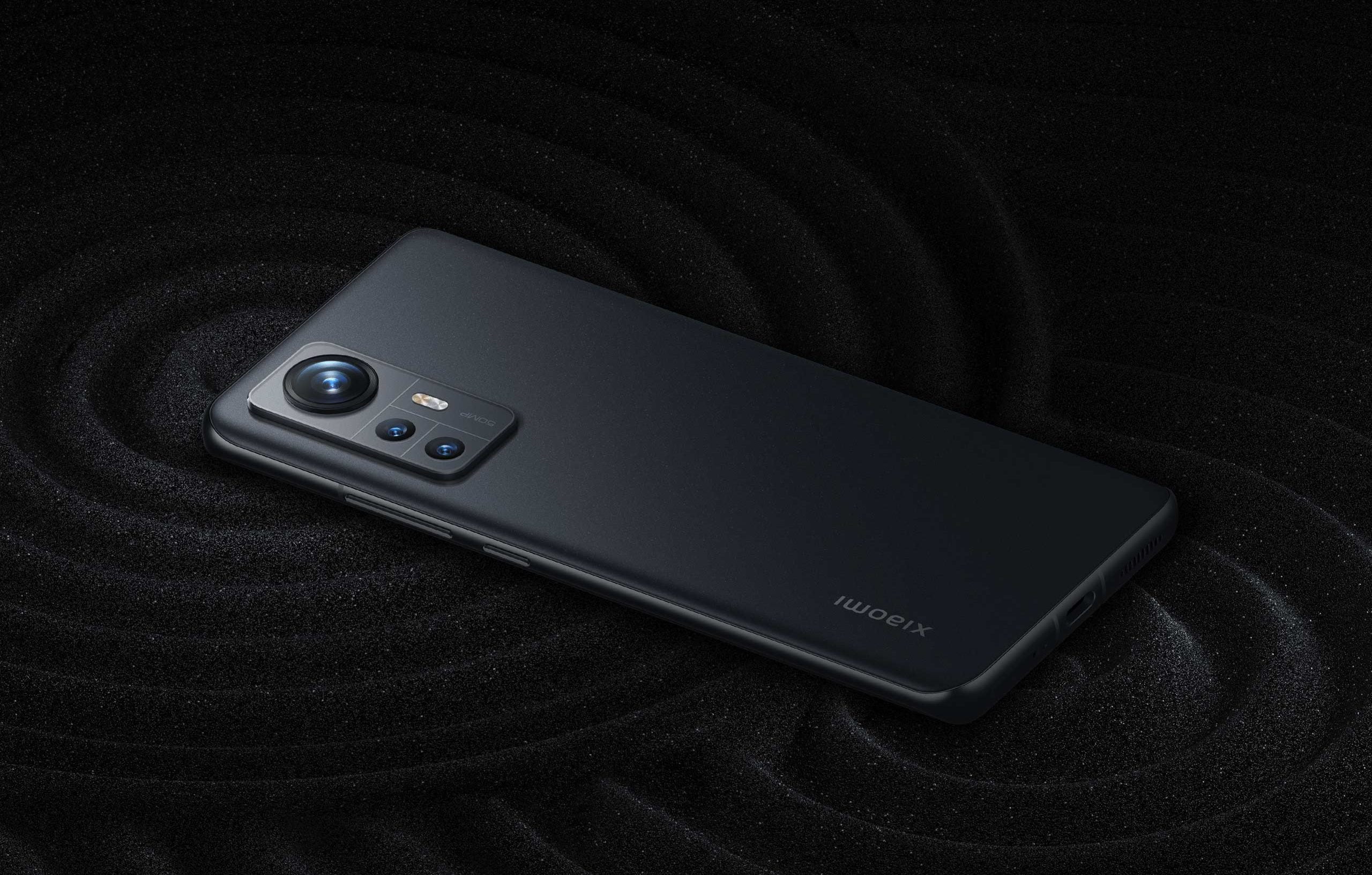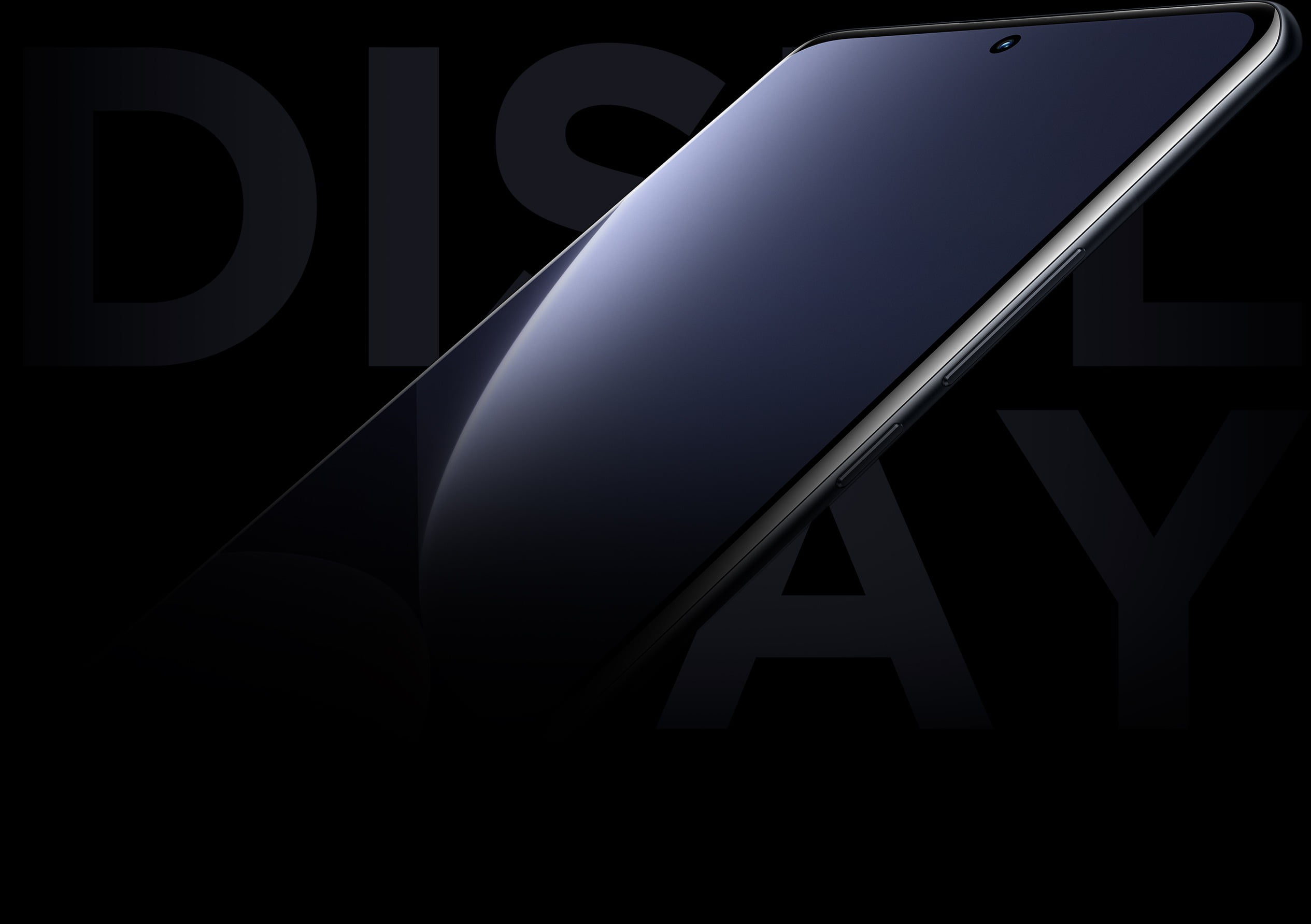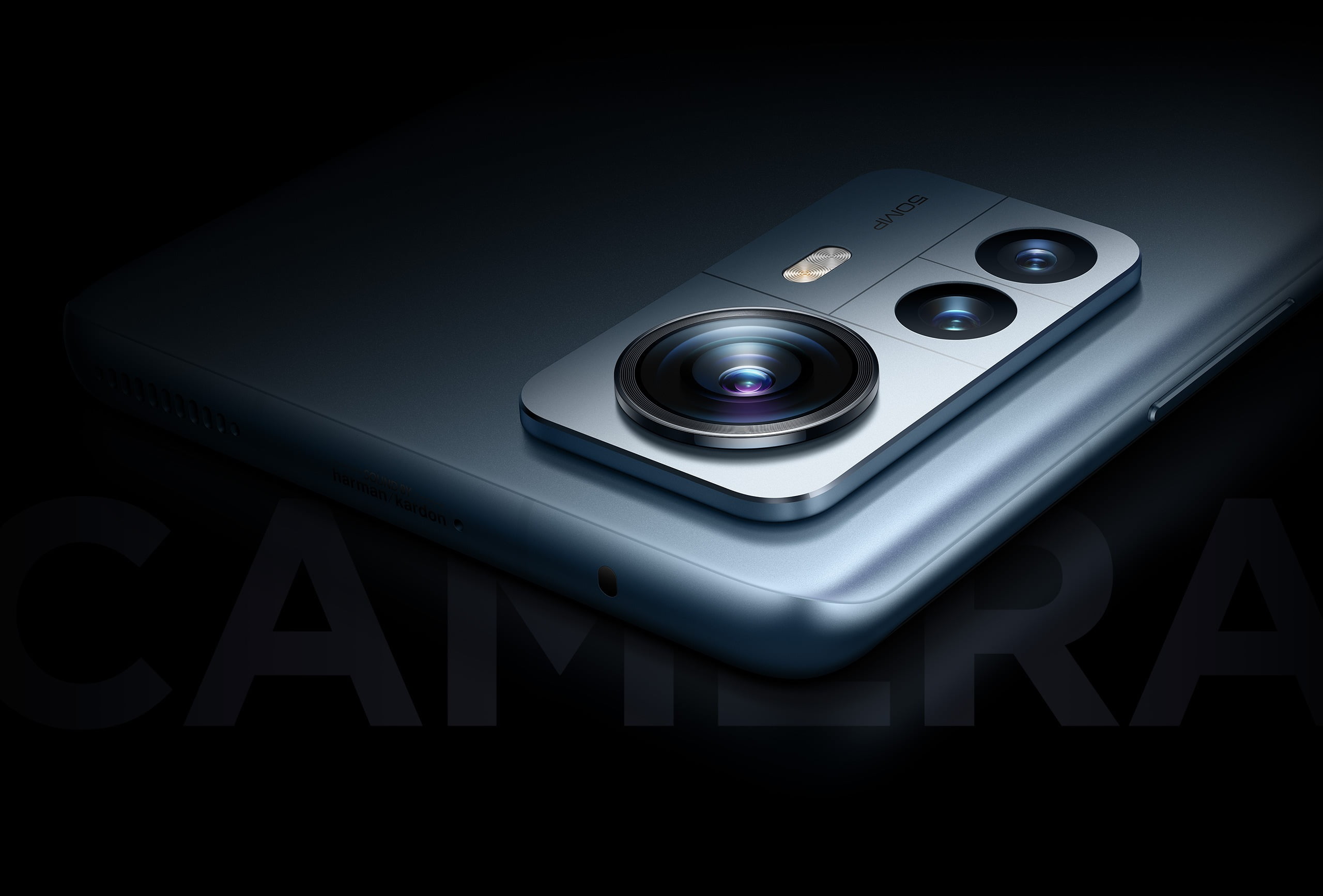
It was exactly on this day in 2020 when Xiaomi launched the Mi 11 in China. Today, we got the successor of that phone and two more phones alongside it under the all-new Xiaomi 12 series. The launch happened in China today, and three phones were launched, namely the Xiaomi 12X, 12, and 12 Pro, with the pricing in the same order as well. The Xiaomi 12X, as the name suggests, is a successor to the Xiaomi 11X. Interestingly, the 11X was just a rebadged Redmi K40, but this time, Xiaomi has launched the 12X first, so maybe the K50 is going to be a completely different phone. Anyways, let’s talk about each of the phones under the 12 series that launched today.
XIAOMI 12X

Design-wise, all these three phones are very similar. The Xiaomi 12X has a compact form factor, thanks to a small display. It is also quite narrow at 69.9mm. There is a triple camera module on the back, and you can easily identify the large main sensor. The phone comes in three colors, and there is a matte finish on the rear.
On the front, there is a curved display with a hole punch cutout in the center. The USB Type-C port is present on the bottom.
The display on the front is a 6.28-inch AMOLED with a Full-HD+ resolution and Corning Gorilla Glass Victus protection. The peak brightness of this panel is 1100 nits, and it supports Dolby Vision. The refresh rate goes up to 120Hz, and the touch sampling rate up to 480Hz. Interestingly, this panel can output 12-bit colors!

The triple camera module on the rear includes a main 1/1.56″ 50 Megapixel Sony IMX766 sensor with OIS, a secondary 13 Megapixel ultrawide camera with a 123-degree FOV, and finally, a 5MP macro shooter. The main camera is capable of shooting up to 8K videos at 24fps. For selfies, there is a 32 Megapixel camera that can shoot up to 1080p 60fps videos.
The phone has a 4,500mAh battery and supports 67W fast wired charging. There is no wireless charging support for the Xiaomi 12X.
As for performance, Xiaomi 12X is powered by the Qualcomm Snapdragon 870 SOC, so while it is not having a top-of-the-line chip, we know that Snapdragon 870 is a really capable SOC. It is, in fact, a more balanced chip than the Snapdragon 888 or 888+. There is either 8GB or 12GB LPDDR5 RAM paired with 128GB or 256GB UFS 3.1 storage.

Xiaomi 12X runs on MIUI 13 out of the box and has a stereo speaker setup tuned by Harman Kardon. Some other features include an in-display fingerprint scanner, X-axis linear motor, NFC, and a large cooling pad despite the phone having a compact form factor.
Here is the price of Xiaomi 12X in the Chinese market –
- 8GB + 128GB – ¥3199 ($499)
- 8GB + 256GB – ¥3499 ($549)
- 12GB + 256GB- ¥3799 ($595)
XIAOMI 12

Next up under the Xiaomi 12 series is the vanilla Xiaomi 12. This is the successor to Mi 11 and comes with some impressive upgrades over that phone. Now, compared to the Xiaomi 12X, there is hardly any difference if we keep the chipset aside. It has the same design, the same form-factor, the same display, the same camera setup, and even the same battery size & charging speed. The only design change is that the Xiaomi 12 has one extra color option, and that’s the green color with a leather-like texture on the rear.
The biggest upgrade that Xiaomi 12 brings over the 12X is the SOC. It has the new Snapdragon 8 Gen 1 SOC under the hood that offers 20% better CPU performance and up to 52% better graphics performance than the Snapdragon 888, let alone the Snapdragon 870 of 12X. The cooling system that this phone uses is again the same as that for the 12X. Also, unlike the 12X, the Xiaomi 12 supports 50W wireless charging and hence 10W reverse wireless charging too. The storage options are the same.
So basically, Xiaomi 12X is the Xiaomi 12 but with a less powerful chip and no wireless charging support. Everything else is the same. Due to the same reason, there isn’t a huge difference in their pricing. Here is the pricing of Xiaomi 12 in China –
- 8GB + 128GB – ¥3699 ($579)
- 8GB + 256GB -¥3999 ($629)
- 12GB + 256GB – ¥4399 ($689)
XIAOMI 12 PRO

Finally, we have the most impressive phone under the Xiaomi 12 series, the 12 Pro. This is the successor to the Mi 11 Pro of last year. Design-wise, it is again the same-looking phone as the other two, but unlike the others, this is not at all a compact phone. And all of the extra space that this large form factor results in is utilized incredibly well.
Like the Xiaomi 12, the 12 Pro has the Snapdragon 8 Gen 1 SOC and also the same storage options. There is a 4,600mAh battery, and while the wireless charging speed is the same as Xiaomi 12, the wired charging is upgraded from 67W to 120W!

And this is just the beginning of the upgrades that this phone has over the vanilla model. Display-wise, Xiaomi 12 Pro has a large 6.73-inch 2K AMOLED with LTPO 2.0 tech, which allows an adaptive refresh rate between 1Hz and 120Hz. It is a Quad-HD+ panel with Gorilla Glass Victus protection and up to 1500 nits of peak brightness. There is support for HDR10+ and Dolby Vision. The fingerprint scanner sits under the display.

The cameras on this phone are even more impressive. The triple camera setup on the rear has not one or two but rather three 50MP sensors! The main sensor is a 50MP Sony IMX707, and it is a large 1/1.28″ sensor with 1.22-micron individual pixel size and 2.44-micron pixel size after 4-in-1 pixel-binning. Then there is a 50 Megapixel Samsung JN1 sensor for ultrawide photos (115-degree) and finally a 50 Megapixel JN1 sensor with a Portrait lens. The main camera has OIS as well. There is support for up to 8K 24fps video recording.
For selfies, Xiaomi 12 Pro has the same 32MP camera s Xiaomi 12. Finally, the phone runs MIUI 13 out of the box, and some other features include WiFi 6 Plus, Bluetooth 5.2, in-house Surge P1 chip, Liquid cooling, etc.
Here is the pricing for China –
- 8GB + 128GB – ¥4699 ($739)
- 8GB + 256GB – ¥4999 ($785)
- 12GB + 256GB – ¥5399 ($849)
All these three phones will be available in China starting December 31st. There is no announcement from the brand on global launch.